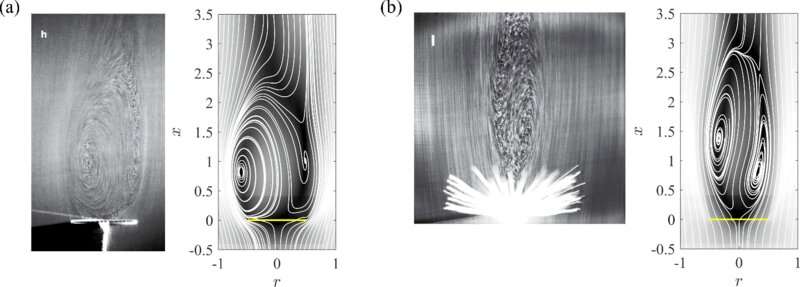July 10, 2019 report
Equations from fluid dynamics used to find optimum arrangement of rods in dandelion pappus

A team of researchers from École Polytechnique Fédérale de Lausanne, the University of Twente and Università di Pisa has used equations from fluid dynamics to find the optimum arrangement of rods in a dandelion pappus. In their paper published in the journal Physical Review Letters, the group describes their work and what it showed.
Last year, a team at the University of Edinburgh published the results of their study on the flight of dandelion seeds, conducted using cameras and miniature wind tunnels. They discovered that the unique design of the pappus—the parachute-looking bristles—allowed the seeds to float on the wind in a very efficient manner. They found that as the pappus floats along, the spines channel the air around them in such a way as to form a vortex in the pappus's wake. And because the air pressure is lower in the vortex, the pappus and its seed cargo are able to remain aloft longer than they would otherwise. In this new effort, the researchers sought to better understand the role of the number of spines in creating the vortex and in maintaining flight stability.
To better understand the flight behavior of the pappus, the researchers created models to mimic its behavior using equations from fluid dynamics. In their paper, they describe their models as collections of rods connected together in a way that was similar to the spokes on a bicycle wheel. The physics equations allowed them to model airflow patterns that occur naturally as a pappus floats through the air.

The researchers report that their models showed the same kinds of vortices forming as the researchers with the prior effort had seen first-hand. They next ran the models using different numbers of rods. They found that the optimum number was 100, which matched the number found in a real pappus. At this number, the pappus was most stable while floating—with more rods, flight became unstable; with fewer rods, flight distance was reduced. They suggest their findings could be used to design lighter-weight parachutes.
More information: P. G. Ledda et al. Flow dynamics of a dandelion pappus: A linear stability approach, Physical Review Fluids (2019). DOI: 10.1103/PhysRevFluids.4.071901
Journal information: Physical Review Letters
© 2019 Science X Network




















